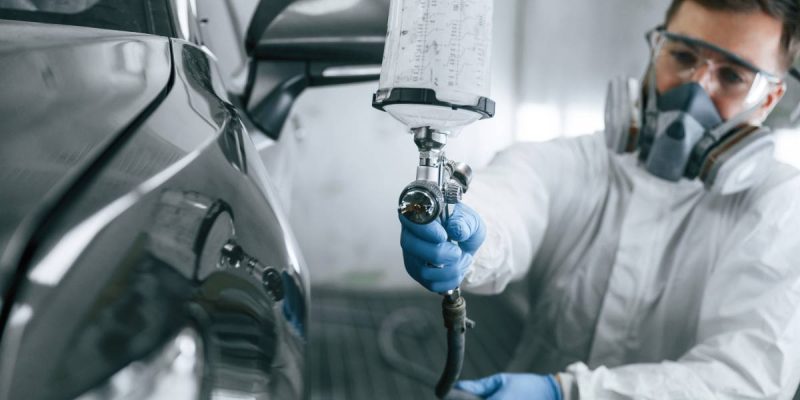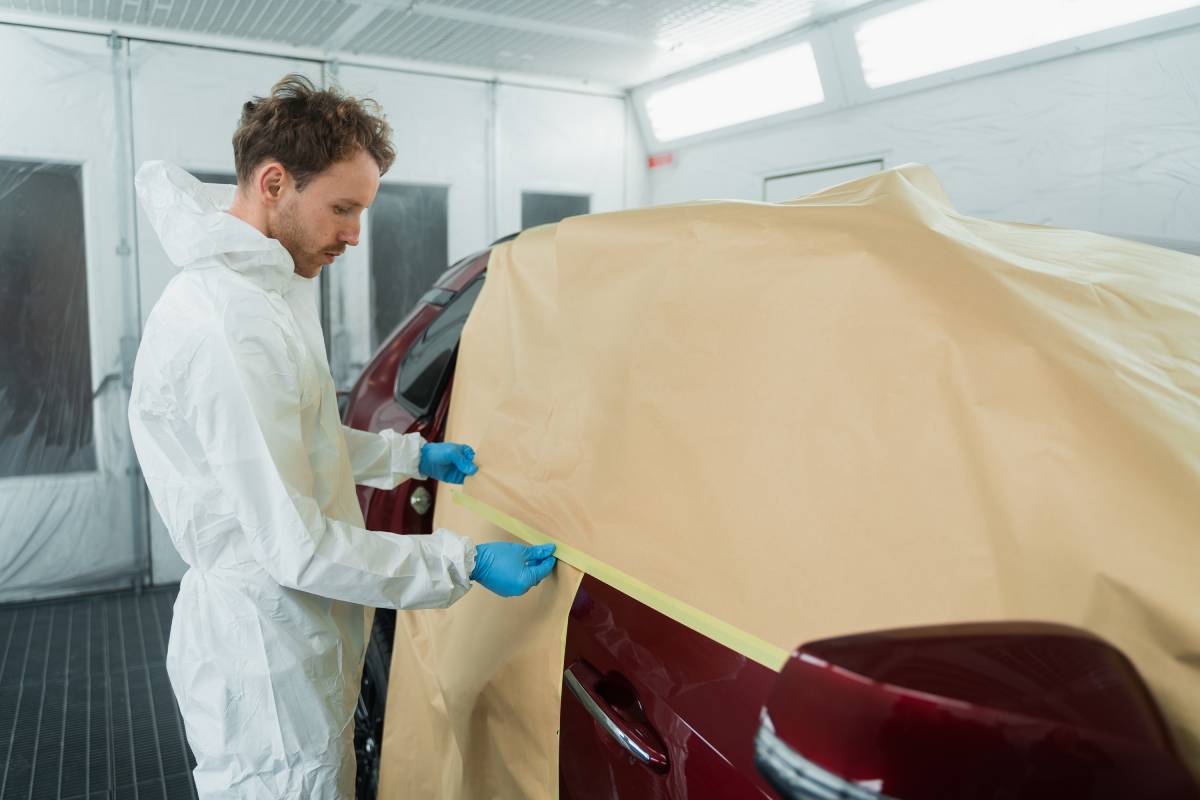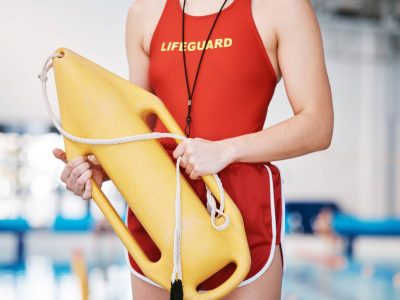Keeping your car looking pristine can be tough, especially when it comes to protecting its paint job. Scratches and damage can happen anytime and anywhere doesn’t matter if you just bought a brand-new car from the showroom an hour ago or bought a used car that’s been around for a decade.
So, can you fix your car’s paint job yourself? We’ll cover that in this article. We’ll also help you decide if you need professional help and share some tips for successful touch-ups. Let’s dive in!
Can you paint over a painted car?
So, you want to change the colour of your car? Maybe you’re tired of the old colour or you just want to give it a fresh look. You might be wondering: Can you paint over a painted car? The short answer is yes, you can.
However, there are some important things to consider before you start grabbing the paintbrushes.
1. Surface Preparation
Before you start painting, you need to prepare the surface properly. This involves cleaning the car thoroughly to remove any dirt, grease, or wax. You might also need to sand down the existing paint to create a smooth surface for the new paint to adhere to. This step is crucial for a successful paint job.
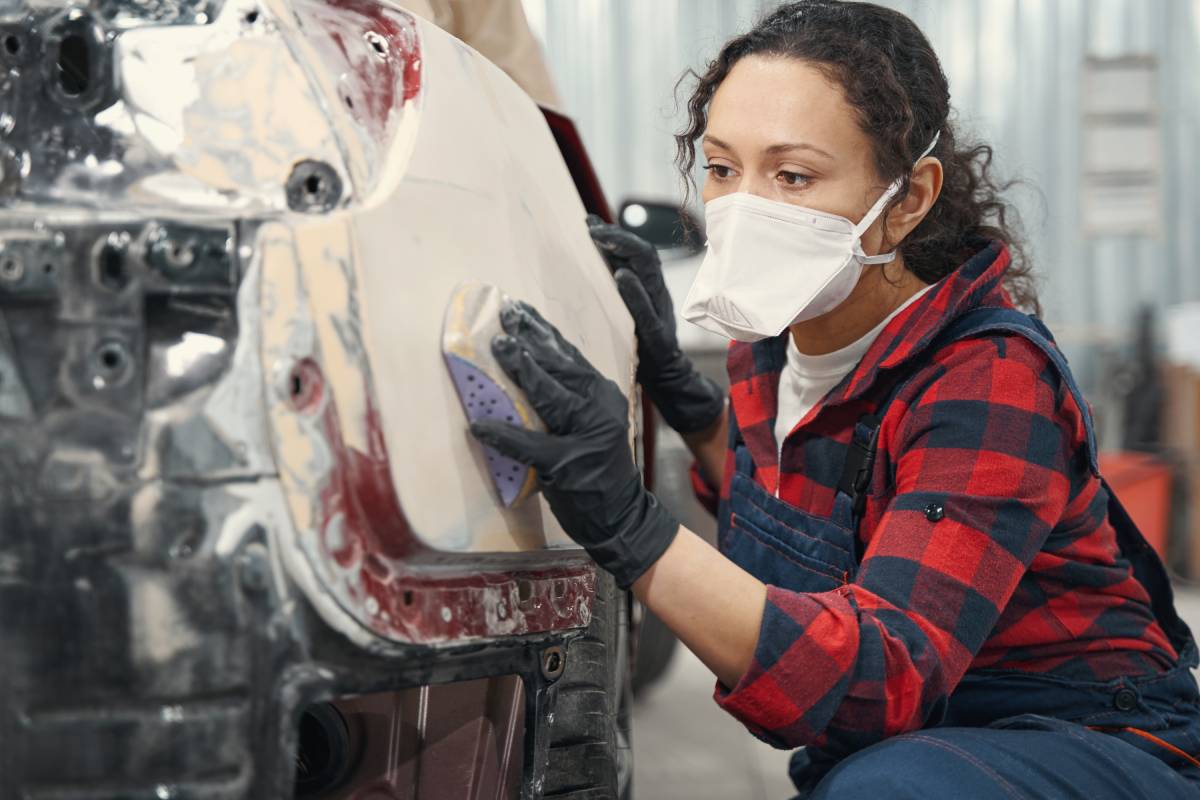
2. Primer
Just like painting your house or anything else, after cleaning and sanding, it’s time to apply a primer. Primer helps the new paint bond to the old paint and provides a smooth base for the topcoat. Make sure to choose a primer that is compatible with both the existing paint and the new paint you plan to use.
3. Choosing the Right Paint
Not all paints are created equal. Make sure you choose a paint that is suitable for automotive use. Automotive paints are designed to withstand the elements and provide a durable finish. You can choose between acrylic, enamel, or urethane paints depending on your budget and preferences.
4. Applying the Paint
Once the primer is dry, you can start applying the new paint. It’s important to follow the manufacturer’s instructions carefully and apply the paint evenly to avoid drips or streaks. Multiple thin coats are usually better than one thick coat, as they result in a smoother finish.
5. Finishing Touches
After the paint has dried, you can add a clear coat for extra protection and shine. Again, make sure to choose a clear coat that is compatible with the paint you used. Once the clear coat is dry, you can buff and polish the surface to achieve a glossy finish.
Things to Consider
- Old Paint Condition: If the existing paint is in poor condition with rust, peeling, or deep scratches, it’s better to strip it completely before applying new paint.
- Colour Change: If you’re changing the colour drastically, you might need additional coats of paint to achieve full coverage.
- Professional Help: Painting a car can be challenging, especially for beginners. If you’re not confident in your skills, it’s best to seek professional help to ensure a high-quality finish.
Can I paint my car myself?
Certainly! Painting your car yourself is possible, but it requires careful preparation, patience, and attention to detail. Here’s what you need to know to paint your car yourself:
1. Preparation
- Workspace: Before recolouring your car, find a well-ventilated area with enough space to work around your car. A garage or carport is ideal, but if you don’t have one, consider working outdoors on a calm day to minimize dust and debris.
- Cleaning: Thoroughly clean your car to remove dirt, grease, and wax. Use a degreaser and soap, then rinse and dry completely.
- Sanding: Sand the entire surface of your car with fine-grit sandpaper to create a smooth base for the new paint. This step helps the paint adhere better.
2. Gathering Materials
- Paint: Choose automotive paint that is compatible with your car’s surface and meets your desired colour and finish. You’ll also need primer and clear coat.
- Tools: Gather paint sprayers or paint guns, masking tape, sandpaper, tack cloth, respirator mask, and safety goggles.
3. Applying Primer
- Masking: Use masking tape and paper to cover areas you don’t want to paint, such as windows, trim, and lights.
- Primer: Apply a thin, even coat of automotive primer to the entire surface of your car. Follow the manufacturer’s instructions for drying times and sanding between coats.
4. Painting
- Mixing: Mix your automotive paint according to the manufacturer’s instructions. Strain it to remove any impurities.
- Spraying: Using a paint sprayer or gun, apply the paint in thin, overlapping coats. Start from the top of the car and work your way down. Allow each coat to dry before applying the next one.
- Multiple Coats: You may need several coats of paint to achieve full coverage and depth of colour.
5. Applying Clear Coat
- Mixing: Mix your clear coat according to the manufacturer’s instructions.
- Spraying: Apply clear coat in the same manner as the paint, using thin, even coats. This adds shine and protection to your new paint job.
6. Finishing Touches
- Buffing: Once the clear coat has dried, use a polishing compound and buffer to smooth out any imperfections and achieve a glossy finish.
- Removing Masking: Carefully remove the masking tape and paper from the car.
- Final Inspection: Inspect your paint job for any flaws or areas that need touching up.
7. Considerations
- Time and Patience: Painting a car takes time and patience. Rushing the process can lead to poor results.
- Skill Level: Painting a car requires some skill and experience. If you’re not confident in your abilities, consider practising on a smaller project or seek professional help.
- Safety: Always wear appropriate safety gear, including a respirator mask and goggles, to protect yourself from fumes and overspray.
You might be able to fix minor car paint damage yourself, but it depends on how bad it is. Small scratches or chips can often be repaired with the right tools and materials, like a touch-up paint pen designed for cars.
For more serious damage like large dents, deep scratches, or peeling paint, it’s better to leave it to the professionals. Trying to fix big problems on your own could make things worse or leave you with a patchy finish that doesn’t match the rest of your car.
Touch-up paint pens are a convenient and affordable option for small scratches or chips. However, they may not work for all types of car paint. Matte or textured finishes, for example, might need a different approach or professional assistance.
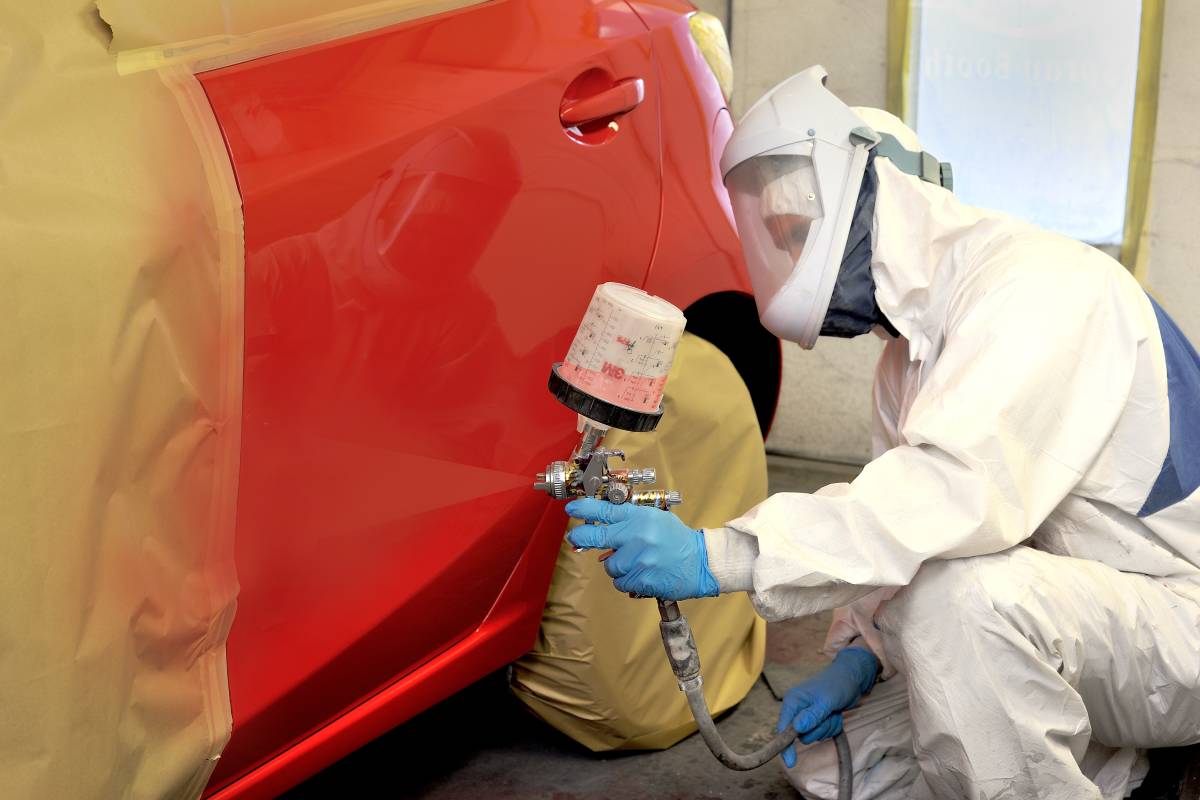
How much does it cost to repaint a car?
On average, a basic respray can range from $1,500 to $3,500, but it can go even higher, especially for larger or luxury vehicles, which may cost up to $5,000 or more.
The overall cost of repainting a car depends on whether you need a full paint job or just specific sections like a door or bumper. Here are some typical costs:
- Bumper repaint: $150 to $300
- Door repaint: $100 to $500
- Roof repaint: $200 to $1,000
- Full car repaint: $1,500 to $3,500
Several factors influence the cost of car painting:
- Type and Quality of Paint: Different types of paint have varying prices. For instance, metallic and pearl colours might cost more due to the complexity of the application.
- Extent of Bodywork: If there’s significant damage to the body, additional bodywork will increase the cost.
- Preparation Work: More prep work means higher labour costs.
- Labour Cost: Labor rates depend on the location and the expertise of the painter.
When it comes to paint types, prices can vary:
- Solid Paint: $34 per litre
- Matte: $100 per liter
- Metallic: $120 per liter
- Pearlescent: $250 to $2,000 per car
High-quality paints tend to be more expensive but offer better durability and finish. Paint options include acrylic, enamel, lacquer-based, urethane, waterborne enamels, and 2-pack paints (2K paint).
Keep in mind that labour costs significantly contribute to the overall expense. Additionally, various finishes like high-gloss or metal flakes can also increase the painting cost.

